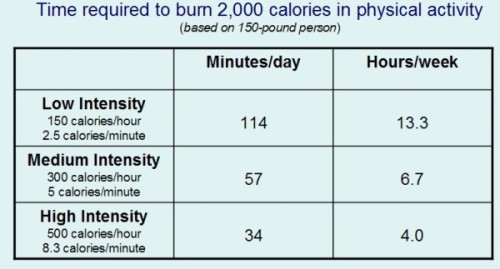"Fat-Burning" Workouts: Founded in Fact or Fiction?
 Wednesday, May 25, 2011 at 6:47PM
Wednesday, May 25, 2011 at 6:47PM 
We see a lot of claims about the so-called "fat-burning" properties of various eating styles, foods, supplements and exercise modes. On that track I am reposting my blog from a few months ago on "fat-burning" workouts. The rest of these fat-burning claims will be the subject of future blogs, so stay tuned!
At some point you’ve probably heard the term “fat-burning,” and if you’ve ever set foot on a piece of cardio equipment it probably had a “fat-burning” mode. The implication is that there is something especially important about burning fat in maximizing weight loss.
Weight loss however, is a function of creating a calorie deficit (taking in fewer calories than you burn), and not the substrate (carbohydrate, protein, or fat) that your body is fueling on. In fact your body is always burning both carbohydrate and fat. As the intensity of the activity that you are engaged in increases the percentage of fat you are burning decreases, while conversely, the percentage of carbohydrate (and total calories) you burn increases.
Author Barry Sears, PhD, was half right when he put the following bullet point on the back cover of his (one time best selling) diet book The Zone:
“You can burn more fat watching TV than by exercising.”
It is true that the percentage of fat you are fueling on is highest when you are doing the least! That being the case, if you really want to go for fat-burning, why not just stay on the couch!
The facts: when total exercise calories are equal, there is no significant difference in weight (or fat) loss between low-intensity and high-intensity workouts. But the time it takes to burn the calories is substancially more at low-intensity!
Several years ago I attended a workshop by Cedrick Bryant, PhD, chief exercise physiologist with Stairmaster. After discussing some research and the study referenced below, one of the questions he was asked was, “why do equipment manufacturers continue putting fat-burning modes on their equipment when they know it’s misleading?” Bryant’s direct (and without hesitation) answer was refreshing:
“As long as the marketing department trumps the exercise physiology department, there will be fat-burning-modes on cardio equipment.”
So what is the best exercise for weight loss? The best exercises for weight loss are the ones you will do! If you want to get the most bang for your buck however (burn the most calories per minute), then gradually increase the intensity that you work out at.
You should also be aware that the current recommendations for weight loss (and maintenance) are that you shoot for a minimum of 2,000 calories of physical activity per week. As you can see is the chart below (based on 150-pound person), it only takes 4 hours a week of high-intensity exercise to burn 2,000 calories, while it would take over 13 hours of low-intensity activity to hit that mark!

So, reaching the 2,000 calorie target requires choosing (and maybe compromising) between the amount of time you want to spend exercising, the type of activities you like to engage in, and the intensity level you like exercising at.
Just remember; go for the calories, not the fat!
Best,
-Dorene
If you don’t want to miss this blog you can subscribe to my RSS feed or sign up to get my blog by email.
What is your question or comment? Comment here, or email me: dorene@beyonddiets.com.
If this is the kind of information you appreciate, you may also like my book: The NEW Healthy Eating & Weight Management Guide.
__________________________
References:
Zelasko, CJ. Exercise for Weight Loss: What are the facts? J Am Diet Assoc. Dec 1995;95:1414-1417.

Reader Comments (3)
Hi Dorene,
Excellent idea to think about burning calories rather than fat. It seems many people have a fascination with fat. I appreciate the honest assessment about marketing from the doctor.
The most important point you make is that the best exercises are the ones you'll do. How true.
Steve
The best fat burning exercise is weight training. Building muscle is a sure way of burning more calories than normal even while resting.
Hi John,
Please see my blog on strength training [http://www.beyonddiets.com/beyonddiets-blog/2011/3/1/is-strength-training-really-the-key-to-weight-management.html] for a clearer understanding of it's affect on Resting Metabolic Rate.
Strength training has lots of benefits--for people of all ages--and ideally it should be a component of balanced overall fitness program. However, for the average person (following the average gym-based workout routine) it won't have a clinically significant affect on their Resting Metabolic Rate.
-Dorene